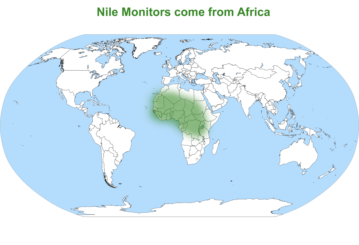Nile Monitor
Reptilarium Animals
Nile Monitor
Conservation status (Least Concern)
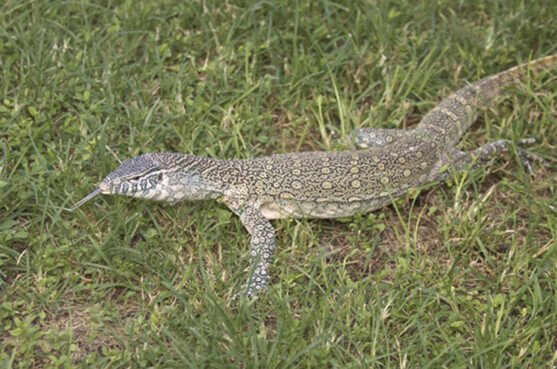

The Nile monitor (Varanus niloticus ) is a large member of the monitor family (Varanidae) found throughout most of Sub-Saharan Africa and along the Nile. The population in West African forests and Savannah's is sometimes recognised as a separate species, the West African Nile monitor (V. stellatus ). It is one of the largest lizards. Other common names include the African small-grain lizard, as well as iguana and various forms derived from it, such as guana, water leguaan or river leguaan (leguan, leguaan, and likkewaan mean monitor lizard in South African English, and can be used interchangeably),
Nile monitors are native to Sub-Saharan Africa and along the Nile. These lizards are not found in any of the desert regions of Africa as they thrive around rivers and lakes. They prefer to live in woodlands, savannas, grasslands, scrub, mangroves, and swamps.
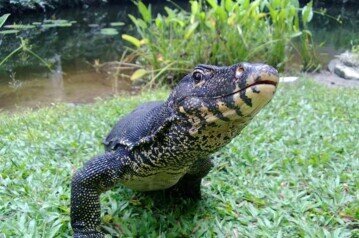
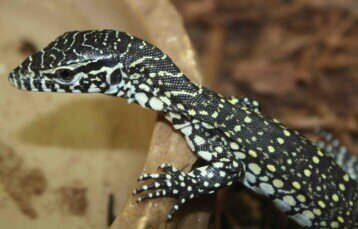
Nile monitors are large African lizards. They are the second-largest reptile in the Nile river. Nile monitors have muscular bodies, strong legs, and powerful jaws. Their teeth are sharp and pointed in juvenile animals and become blunt and peg-like in adults. They also possess sharp claws used for climbing, digging, defence, or tearing at their prey. Like all monitors, they have forked tongues, with highly developed olfactory properties. They have quite striking, but variable, skin patterns, as they are greyish-brown above with greenish-yellow barring on the tail and large, greenish-yellow rosette-like spots on their backs with a blackish tiny spot in the middle. Their throats and undersides are an ochre-yellow to a creamy-yellow, often with faint barring.
Nile monitors are generally solitary and only sometimes may interact with other monitors outside of the breeding season. They are active during the day and spend their time foraging or basking on the shoreline vegetation, trees, logs or rocks. They are often seen in or close to water. At night they sleep on tree branches, in burrows which they dig themselves or submerged in water. Nile monitors are highly aquatic and can remain underwater for 12-15 minutes. They are also excellent climbers and quick runners on land. In the colder parts of their range, Nile monitors hibernate, usually in burrows or in rock cracks. When they sense any danger they tend to run away or may even jump into the water from the tree branch. When threatened juvenile monitors will tail whip as a defensive measure, and as adults, they are capable of inflicting moderate to serious wounds from biting and scratching.
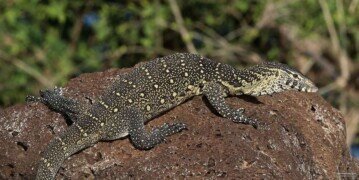
Nile monitors are carnivores (scavengers). They feed on fish, snails, frogs, crocodile eggs and young, snakes, birds, small mammals, insects, and carrion.

